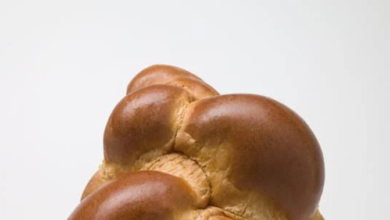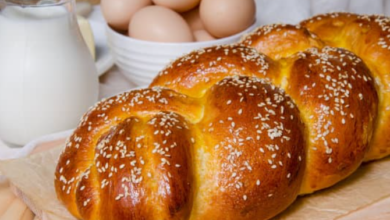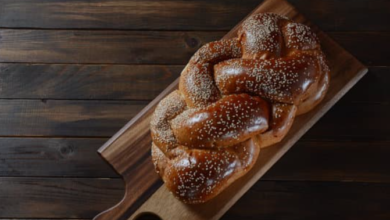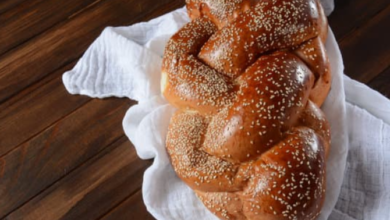Find Out What Makes Challah Bread a Golden Color

What To Know
- As the bread bakes, the carotenoids undergo a chemical transformation, deepening in color and yielding the golden crust that characterizes challah bread.
- The fats in butter or oil interact with the carotenoids in the eggs, resulting in a more pronounced yellow hue.
- The golden color of challah bread is a testament to the interplay of various ingredients and baking techniques.
Challah bread, a staple in Jewish cuisine, tantalizes with its golden hue and irresistible aroma. While its taste is undoubtedly delectable, the question of what makes challah bread yellow has intrigued bakers and food enthusiasts alike. In this comprehensive guide, we embark on a culinary quest to unravel the secrets behind the vibrant color of this beloved bread.
The Role of Eggs: A Rich and Golden Hue
Eggs play a pivotal role in bestowing challah bread with its distinctive yellow color. The yolks, rich in carotenoids, a group of pigments, contribute a vibrant orange-yellow hue to the dough. As the bread bakes, the carotenoids undergo a chemical transformation, deepening in color and yielding the golden crust that characterizes challah bread.
Turmeric: A Natural Coloring Agent
In some variations of challah bread, turmeric, a spice derived from the turmeric plant, is employed as a natural coloring agent. Turmeric contains curcumin, a compound that imparts a warm, yellow color to the dough. When added to the dough, turmeric not only enhances the bread’s color but also enriches its flavor with a subtle earthy note.
Saffron: A Luxurious Golden Touch
Saffron, the world’s most expensive spice, is occasionally used to create an exceptionally golden challah bread. Saffron’s intense yellow color, derived from crocin, a carotenoid pigment, lends a luxurious hue to the bread. However, due to its high cost, saffron is typically reserved for special occasions or as a gourmet treat.
Butter or Oil: Enhancing the Glow
Butter or oil, when incorporated into the challah dough, not only contributes to its richness but also enhances its golden color. The fats in butter or oil interact with the carotenoids in the eggs, resulting in a more pronounced yellow hue.
Baking Temperature: Achieving the Perfect Crust
The baking temperature also plays a crucial role in determining the color of challah bread. A higher baking temperature promotes the Maillard reaction, a chemical reaction between sugars and amino acids that creates a golden-brown crust.
Baking Time: Balancing Color and Texture
Baking time is another important factor to consider. Over-baking can result in a darker, burnt crust, while under-baking may leave the bread pale and undercooked. Finding the optimal baking time ensures a perfectly golden crust while preserving the bread’s soft and fluffy texture.
Recommendations: The Alchemy of Color
The golden color of challah bread is a testament to the interplay of various ingredients and baking techniques. From the rich yolks of eggs to the vibrant hues of turmeric and saffron, each element contributes to the creation of this iconic bread. By understanding the science behind the color, bakers can consistently craft challah bread that delights both the eyes and the palate.
Answers to Your Most Common Questions
Q: Can I substitute other ingredients to achieve a yellow color?
A: Yes, you can use egg yolks, turmeric, or saffron as substitutes.
Q: How much turmeric should I add to my challah dough?
A: Start with 1-2 teaspoons of turmeric powder per loaf.
Q: Is it necessary to use saffron to make challah bread?
A: No, saffron is an expensive ingredient and can be omitted without compromising the taste or texture of the bread.
Q: What is the ideal baking temperature for challah bread?
A: Most challah bread recipes recommend a baking temperature between 350-375°F (175-190°C).
Q: How can I prevent my challah bread from burning?
A: Cover the bread loosely with aluminum foil if it starts to brown too quickly.





